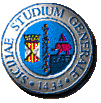How to read the genome
Genome reading, or sequencing, is the process of determining the sequence of nucleotides (A, T, C, and G) in an organism’s DNA. Genome sequencing plays an important role in biological research and medical diagnosis. Here are the basic steps that the genome sequencing process usually involves:
- DNA extraction: The first step is to obtain a DNA sample from the organism. This can be a sample of blood, tissue, cells or other biological material.
- Sample preparation: For DNA analysis, the sample is subjected to various procedures, including purification and fragmentation of the DNA into shorter sections.
- Sequencing: This step involves determining the sequence of nucleotides in the DNA. There are several sequencing methods, including the classical Sanger method and modern high-throughput sequencing (NGS, Next-Generation Sequencing) methods such as Illumina, PacBio and Oxford Nanopore. These methods allow DNA sequencing with high speed and accuracy.
- Genome assembly and annotation: The resulting nucleotide sequences are assembled into a single sequence, which can sometimes be difficult due to repetitive sites and other complexities. The genome is then annotated, which means determining the function and significance of each gene and site.
- Analysis and interpretation: After sequencing the genome, analysis is done which may include gene searching, mutation identification, functional analysis and comparative genomics with other organisms.
- Interpretation of results: The data obtained can be used for medical diagnosis, evolutionary studies, genetic modification and other purposes.
Genome sequencing has become more accessible and faster due to modern technology. This enables biologists, geneticists and researchers to obtain valuable information about the genomes of various organisms and use it to expand our knowledge of biology and medicine.











